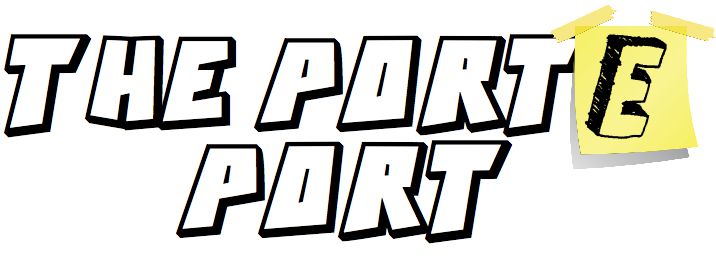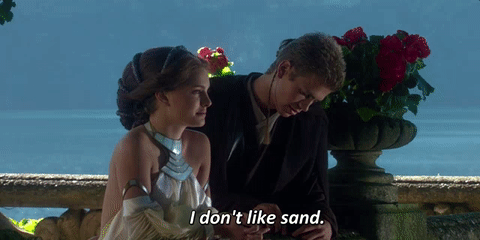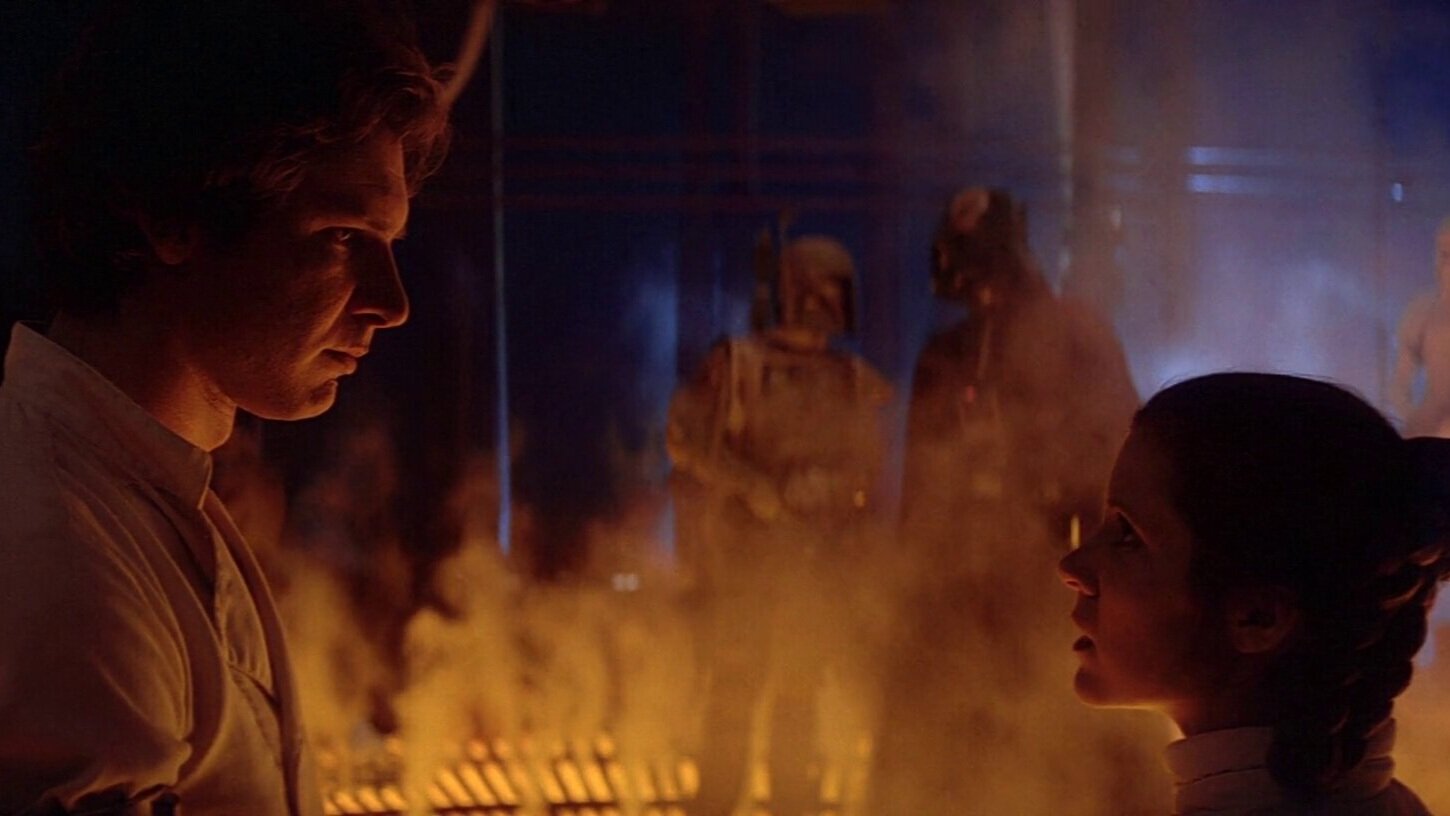Star Wars and Writing a Love Story That Isn't Cringey
Happily ever after.
It’s such a cliched ending that it’s cliche to joke about how cliche it is.
On top of that, it’s unrealistic.
It implies that if two people find their way to each other in the part of the story we happen to see, they must stay with each other forever. And there’s not even a hard road ahead, just smooth sailing now.
Lame.
But maybe that’s just me.
I’m not a fan of the “they are supposed to be with that person” trope.
Except for Jim and Pam, because shut up, that’s why.
There’s nothing worse than a story getting bogged down in a dumb romance.
They can be cringey.
Feel gross.
Be full of questionable actions by all parties involved.
Or go on talking about sand.
I should write an article on how to make a romance as cringey as possible with these two
But, when done well, a love story can add stakes to a novel. We root for people because there’s something more to them than just themselves.
A realistic romance in your story can immerse your reader even more in your fictional world. It adds something tangible to hope for.
Let’s just make them believable and avoid the cringe, shall we?
The Most Important Aspect of Your Story’s Romance
It comes down to one simple thing: real people.
If the characters don’t feel real, then the whole thing is doomed from the start.
Here’s a quick cheat sheet on making characters that feel like they can leap right off the page:
They want something.
Something is in the way of what they want.
And last, but maybe most importantly, they have flaws. (Which probably adds to what stands in the way of what they want.)
Obviously, there’s a ton of stuff that goes into a character, but that’s a good skeleton to build off of.
Your characters will change. They will have positive changes, negative changes, but they won’t be the same at the end of their journey.
Real people have an annoying way of making romantic relationships complicated as hell. So, your love stories should be rife with conflict and tension. That doesn’t mean you need to constantly play the “will they or won’t they” game, but it should be dynamic.
If your story has characters with strong personalities, your story’s relationships will reflect that.
Which brings us to our example: Han and Leia.
Pin this!
Writing a Love Story Like Han and Leia’s
If you asked people to name iconic movie couples, I would wager that Han and Leia would come up often.
And I find that kind of crazy.
They bitch and bicker with each other constantly. They can’t seem to stand to be around each other most of the time.
Remember their fight in Echo Base in Empire Strikes Back? I get second-hand embarrassment every time. There are other people around guys, like, chill!
Oh God, they’re in the South Passage again. PEOPLE ARE TRYING TO WORK HERE!
They slowly form a bond, though.
How?
Like we have talked so many times before, it’s the little things that make the biggest difference.
Their senses of humor and refusal to back down endear them to each other.
Take A New Hope; it’s the tiny moments where Leia makes fun of the Millenium Falcon.
“You came in that thing? You’re braver than I thought.”
And Han does it right back, like in Empire when Leia asks about Lando.
“He's a card player, a gambler, a scoundrel. You'd like him.”
It’s not the grand sweeping gestures that bring these two together, it’s these little moments.
They accept each other for who they are. It’s rare to see in a movie. Usually, someone is changing for someone else.
If there is a moment of realization that they shouldn’t change for another person, the love falls apart.
Here they stay together. Well...for a time.
Which brings us to Force Awakens.
I know discussing the sequels is a minefield of different opinions. I love the characters, and at first, loved a lot of where things were going right up until Rise of Skywalker when Disney started backtracking instead of going with the story they already established.
But I digress.
What I love about Force Awakens is the gall to say that things don’t always work out.
It makes perfect sense that Han and Leia would eventually separate.
The amount they butt heads over and over makes it pretty reasonable to believe.
Add a bratty kid who wants to be Darth Vader to the mix, and you have a recipe for heartbreak.
Both go back to what they know. Leia fights for freedom, and Han tries to forget his problems by smuggling. Both fit right with their characters.
And it makes the relationship all the more realistic.
Sometimes happily ever after just isn’t in the stars.
How to Make Your Story’s Relationships Feel Real
Dive into the personality of your characters.
Every relationship is different because every person is different. Bringing two of those super different people together makes for plenty of tension.
You don’t need to think of sweeping grand gestures to make a good romance in your story.
Think about the most iconic moment from Han and Leia’s love story.
Boba Fett: “So…you catch the game last night?”
We all know it. Even if you haven’t seen Star Wars, you probably know it. Leia professes her love to Han, and he responds with… “I know.” Bam John Williams score. You can hear it!
Han wouldn’t say “I love you” back. It’s just not his character.
So he says “I know” when Leia finally admits her feelings. This isn’t exactly roses and violins playing in the background and a knight in shining armor moment.
But it works perfectly.
If you want moments like that, that feel authentic and are brimming with originality, you need to focus on the individuals you are throwing into your love story.
And keep intertwining things that they want outside of the relationship to challenge if this relationship is going to get in the way of their other goals.
People are more than being enamored with one person. They have things they want outside of that relationship too. Is your character’s relationship getting in their own way?
It’s a great source of tension and authenticity.
Not every couple makes it, not even close.
Don’t think of your relationships in your story as happily ever after.
Think of them as a real bond between two real, flawed, and individualistic people.
Something real will grow naturally out of that.
Dive into more geeky storytelling by signing up for my newsletter. We will explore the movies, books, shows, and games to find what makes them so great. Then use those storytelling techniques in our books. Check it out:











